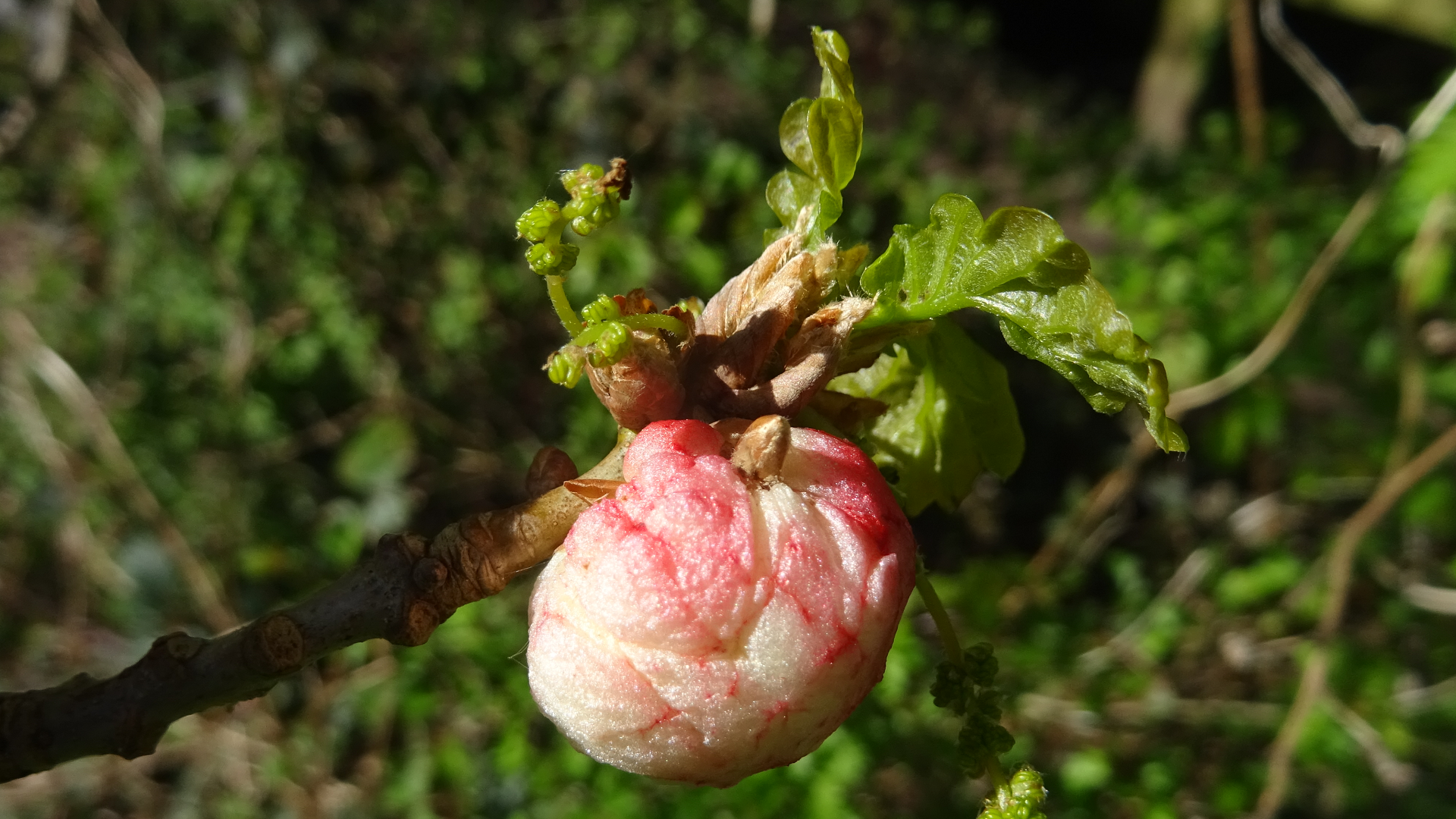Jumping Bean Gall
Pseudoneuroterus saliens
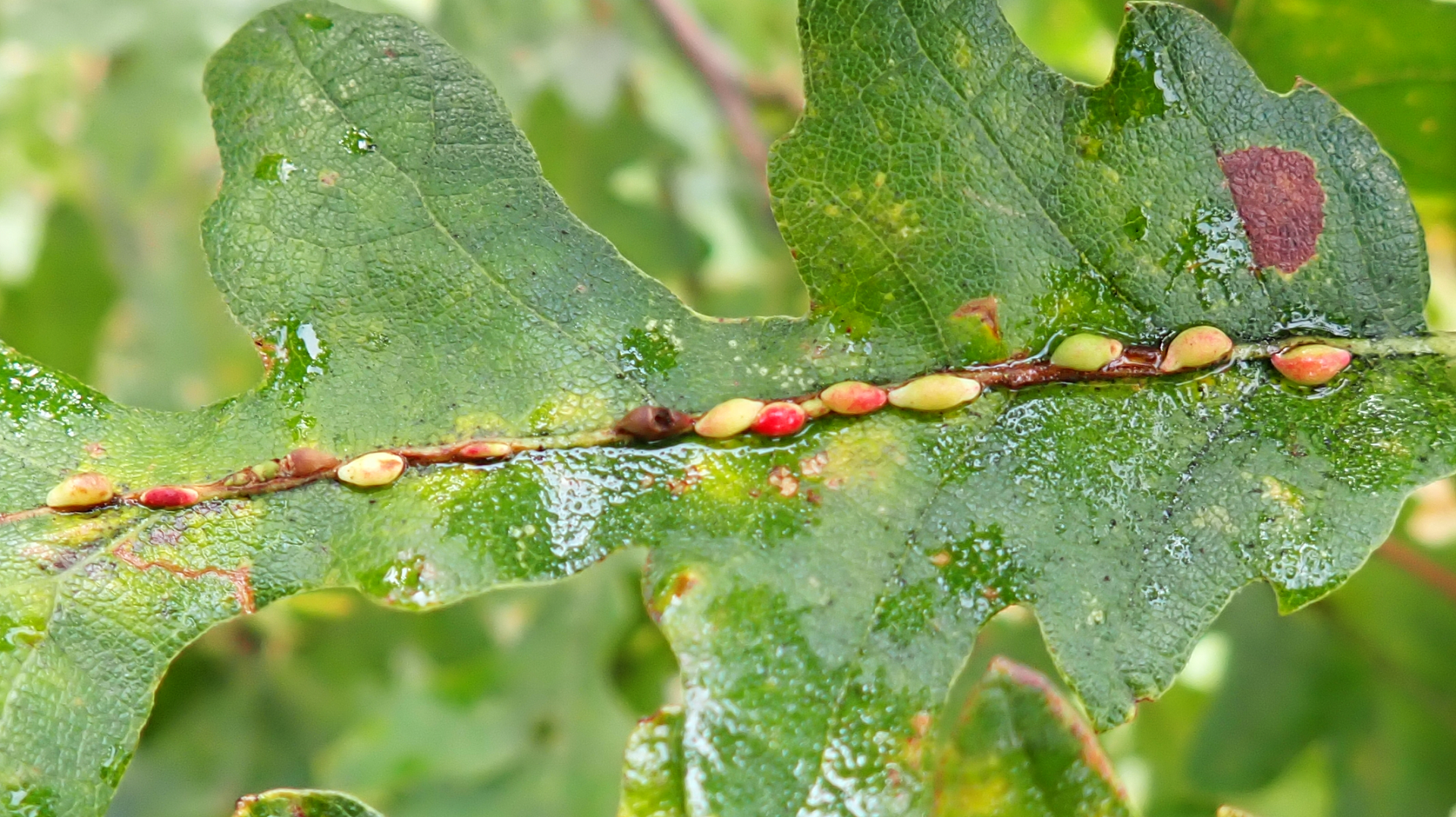
TQ4792 28/10/2023 ©Raymond Small
Caused by the asexual generation of a Gall Wasp on Turkey Oak during autumn; either on young shoots, the mid-ribs or leaf petioles. Each gall (3-4mm long) is inhabited by one larva. The galls change colour from lemon yellow to red. When mature they fall to the ground and are sometimes seen jumping. 'Saliens' is Latin for 'jumping'. Adults emerge during spring to lay eggs on flowers which then produce Anemone galls.
Anemone Gall
Pseudoneuroterus saliens
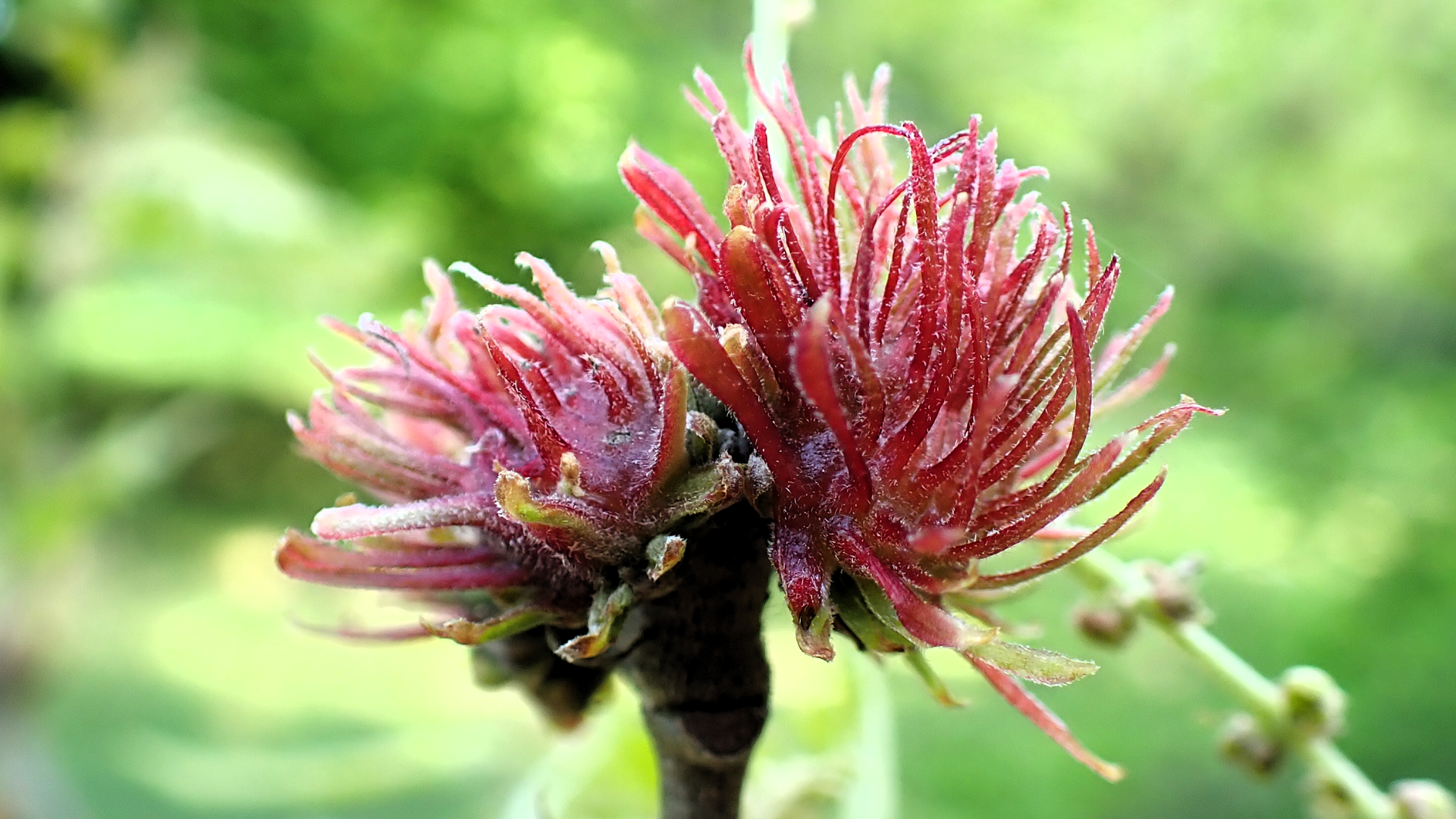
TQ4792 01/05/2025 ©Raymond Small
Anemone Galls form on fertilised Turkey oak female flowers. They are induced by the sexual generation of a gall wasp. Several larvae live in each gall and emerge as adults during summer. The first record of this gall in the UK was during 2004.
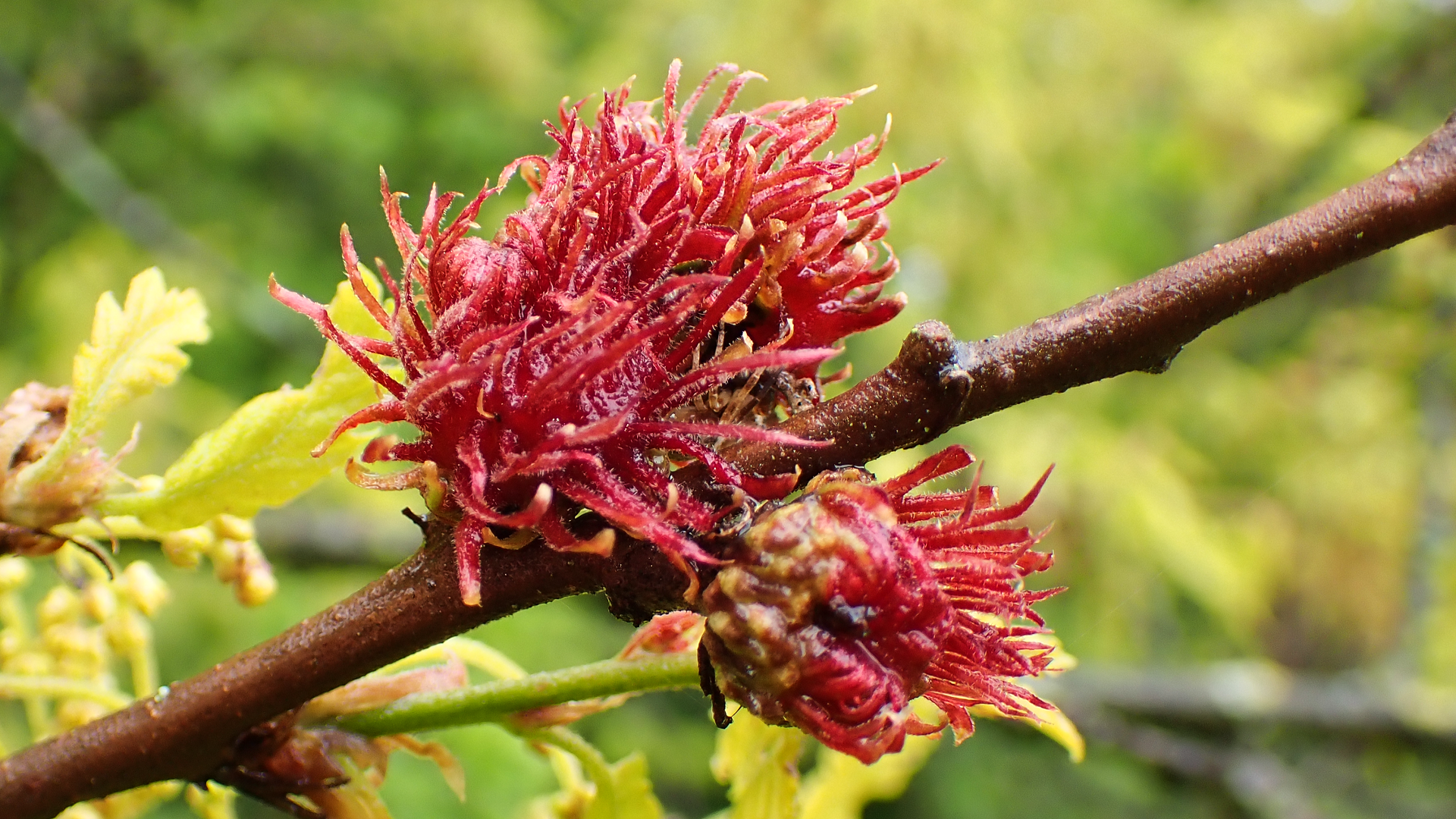
TQ4792 28/04/2024
©Raymond Small
Cluster Gall
Andricus lucidus
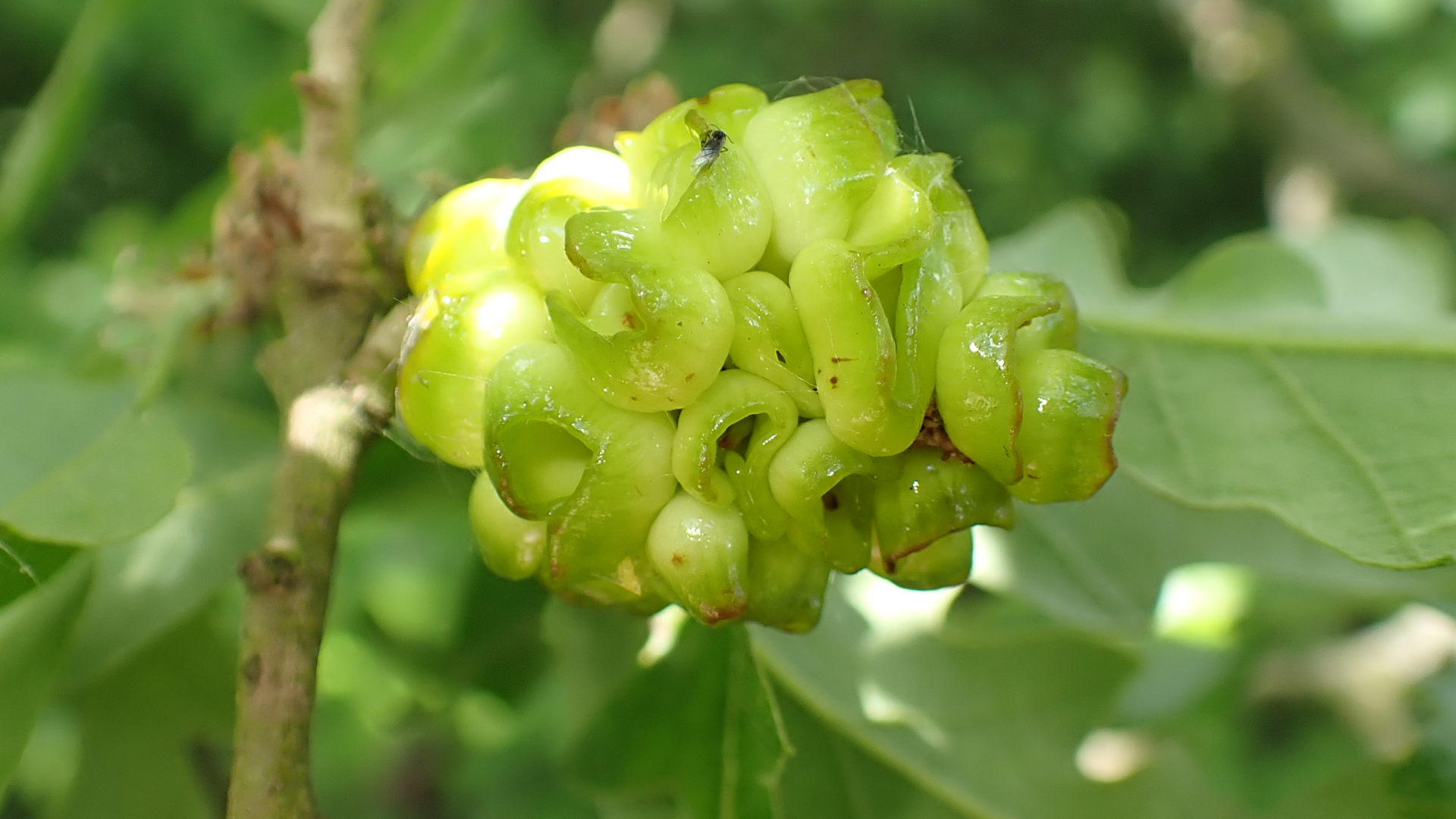
TQ4792 19/05/2025 ©Raymond Small
Cluster Galls first appeared in the UK during the 1990s, originating from the Mediterranean. These galls are caused by the sexual generation of a gall-wasp. The flower-like clusters, measuring up to 35mm across, are comprised of dish-shaped galls that push into each other. The galls are initially green with a shiny, waxy surface, becoming reddish-brown and hard. The asexual generation of this gall-wasp produce Hedgehog Galls.
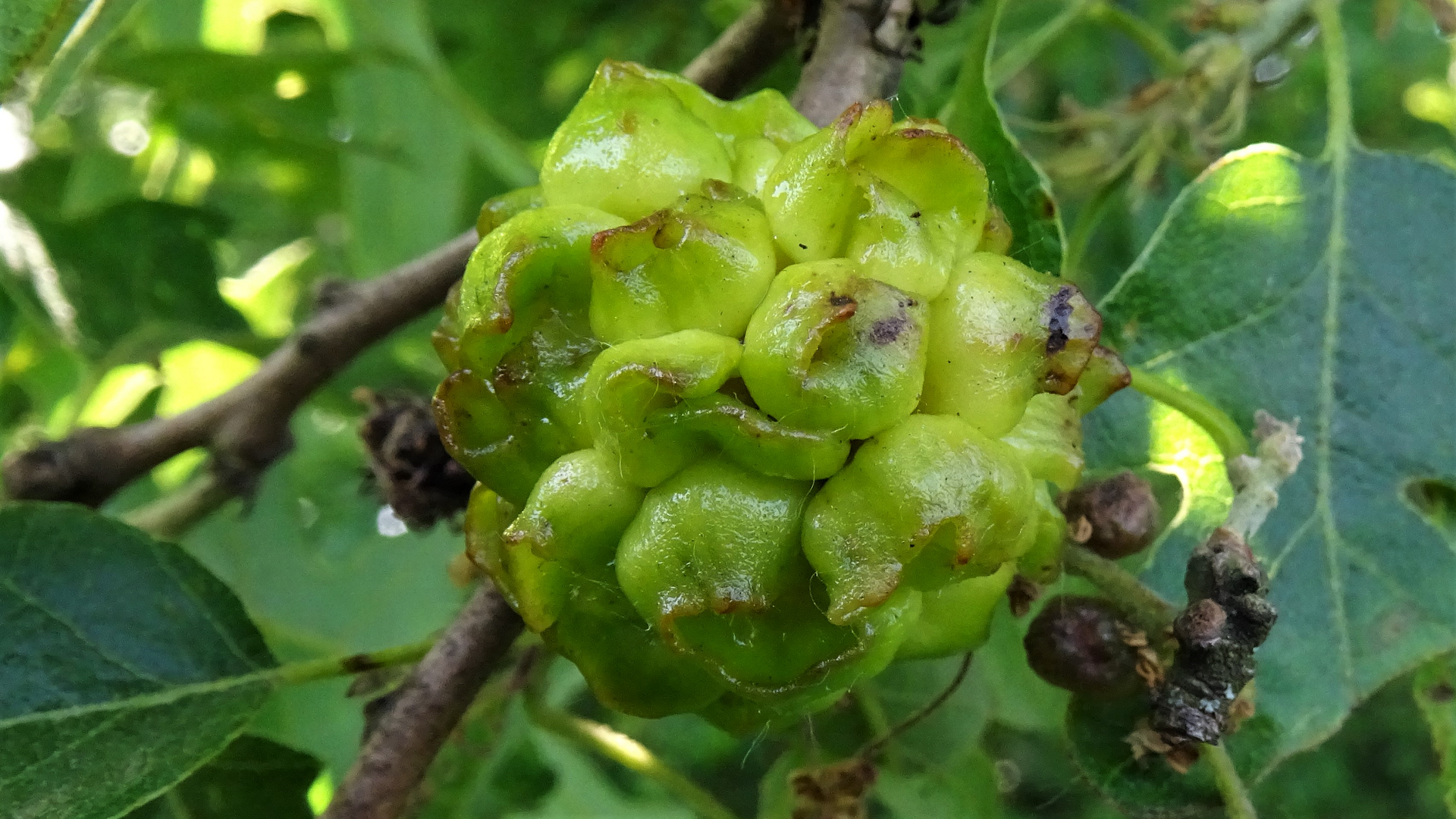
TQ4792 09/06/2023 ©Raymond Small
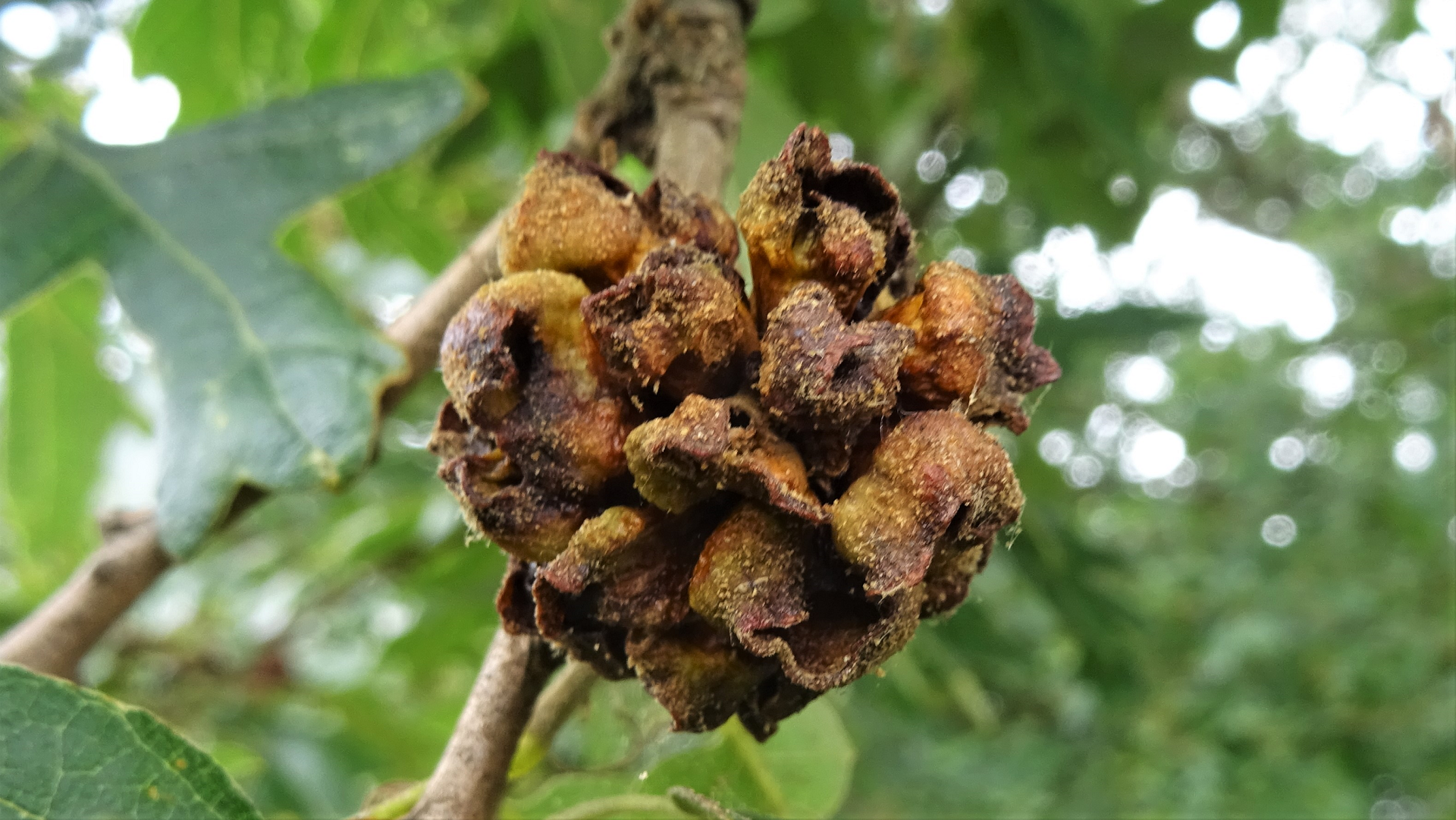
TQ4792 18/07/2023 ©Raymond Small

TQ4792 12/05/2019 ©Raymond Small
Oak Apple
Biorhiza pallida

TQ4793 17/04/2025 ©Michael Trump
Oak Apples on English Oak are caused by larvae of a gall wasp. Eggs laid in oak buds produce spongy apple-like growths. Every 'apple' contains many chambers each enclosing a larva. These apples are not edible.
TQ4792 10/04/2024 ©Raymond Small
Silk Button Gall
Neuroterus numismalis
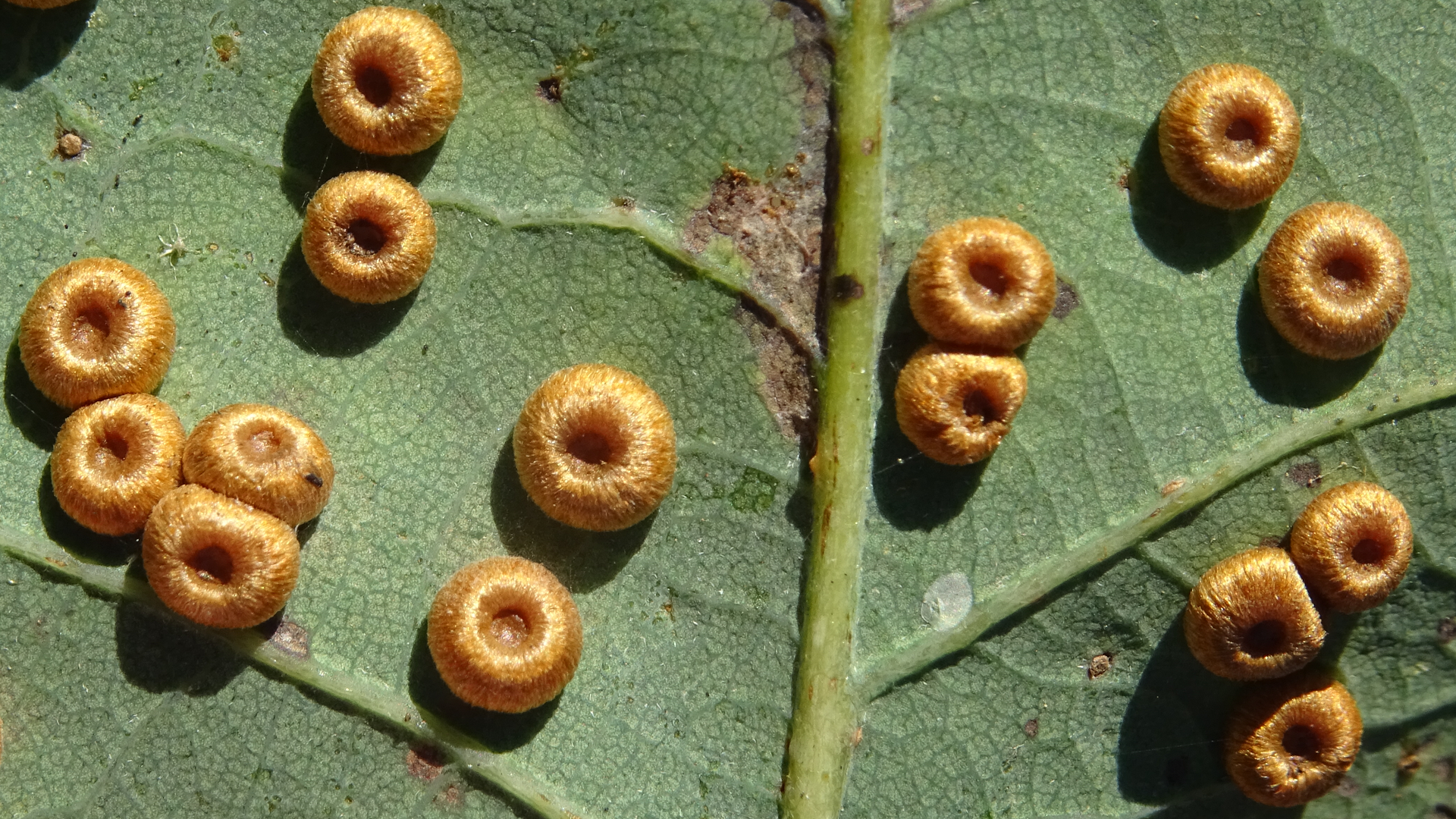
TQ4693 15/09/2024 ©Raymond Small
The agamic generation of a gall wasp causes Silk Button Galls on the underside of Oak leaves. They are round, thick, with a deep central depression, looking similar in my opinion to miniature ring doughnuts up to 3mm across. They often appear in large numbers during autumn.
Common Spangle Gall
Neuroterus quercusbaccarum

TQ4693 15/09/2024 ©Raymond Small
Common Spangle Galls that appear on oak leaves are caused by the asexual generation of a gall wasp, the same species responsible for current galls. The disc-shaped galls are covered with tufts of reddish hairs. During autumn they fall from the leaf and the larvae overwinter in leaf litter.
Marble Gall
Andricus kollari

TQ4792 02/07/2022 ©Raymond Small
Marble Galls on English Oak are produced by the asexual generation of Gall wasp
Andricus kollari on leaf buds. The galls (up to 25mm across) each contain one larva. Initially the galls are green, turning brown in autumn. Marble Galls are high in tannin and were possibly introduced to Britain during the 19th century to supply the ink-making and dyeing industries with a convenient tannin source.
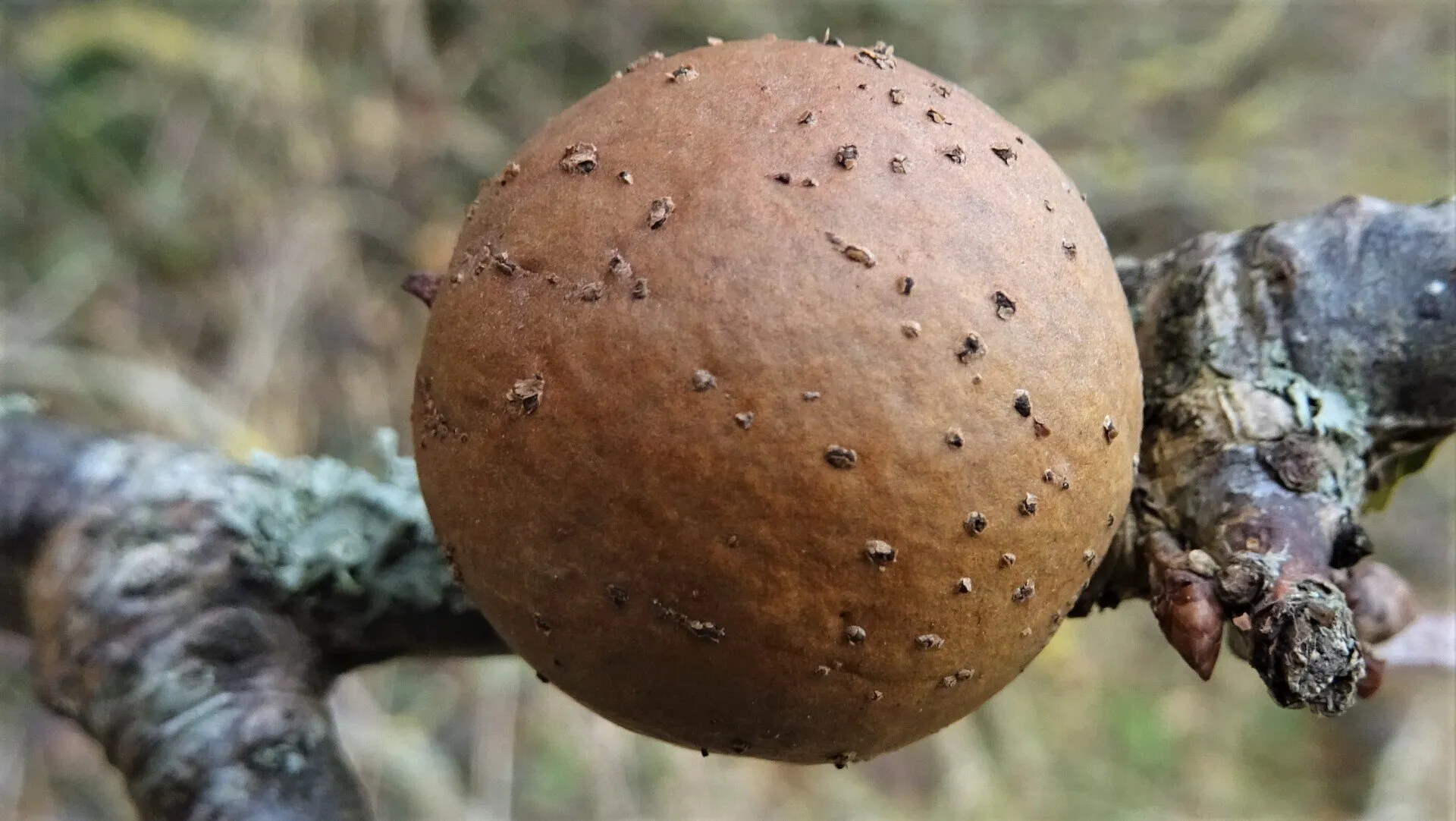
TQ4792 09/02/2022 ©Raymond Small
There is usually one large hole that newly developed adults emerge from after changing from the larval state. Smaller holes are often caused by inquiline insects that exploit the living space of others. Inquilines are not necessarily parasitic and it is possible they cause no harm to the host species.

TQ4792 06/09/2017 ©Raymond Small
Cottonwool Gall
Andricus quercusramuli

TQ4792 05/04/2019 ©Raymond Small
Cottonwool Galls are caused by gall wasp
Andricus quercusramuli on English and Sessile Oak. The white hairs hide up to 20 chambers each occupied by one larva.
Rosebud Gall
Andricus gemmeus

TQ4793 06/09/2019 ©Raymond Small
Originally found in the UK in 2008 at Colchester, Essex. The galls (3-4mm across) are caused by the asexual generation of gall wasp Andricus gemmeus. Often found on Oak trunks during September.
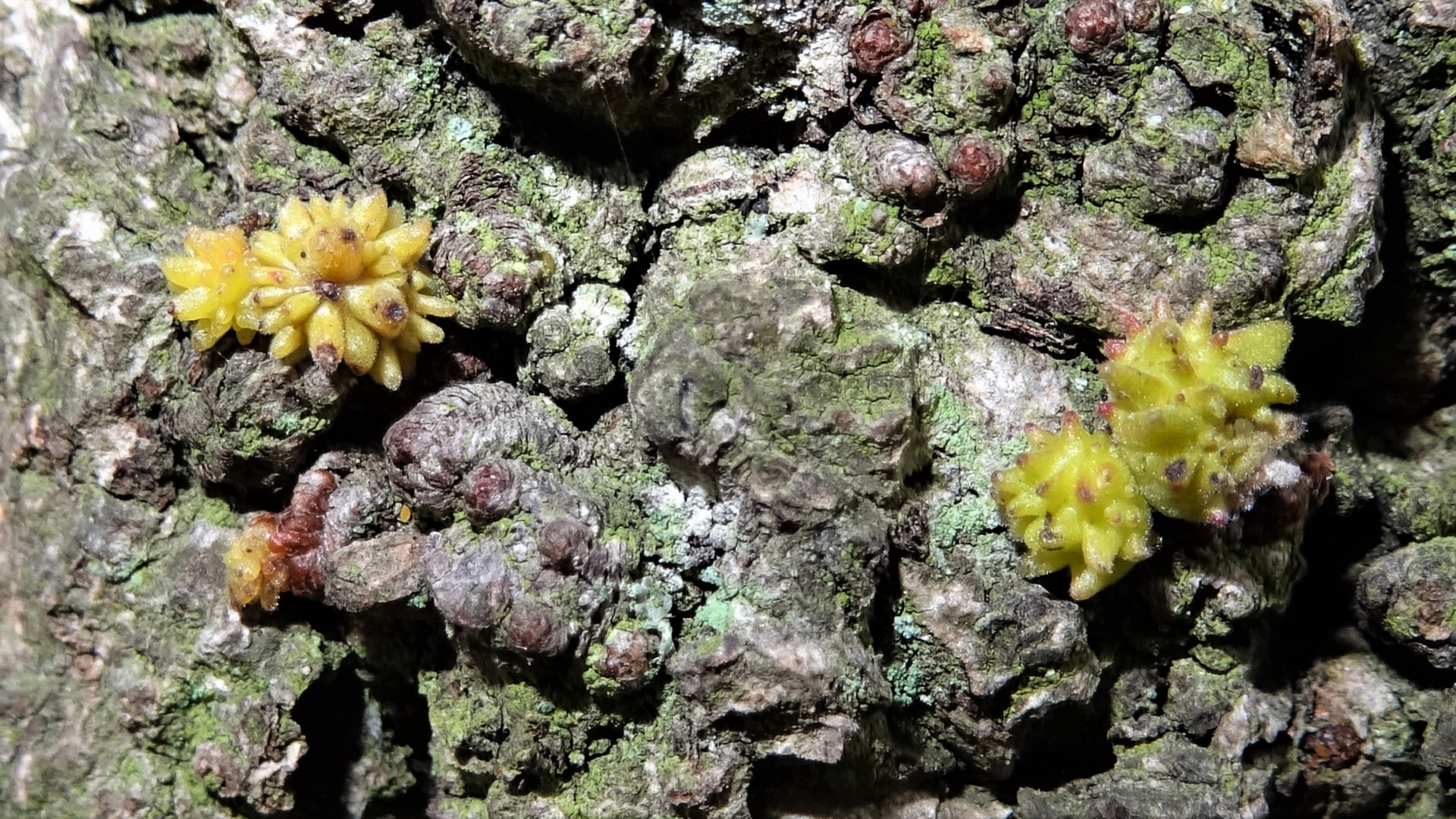
TQ4792 28/09/2018 ©Raymond Small
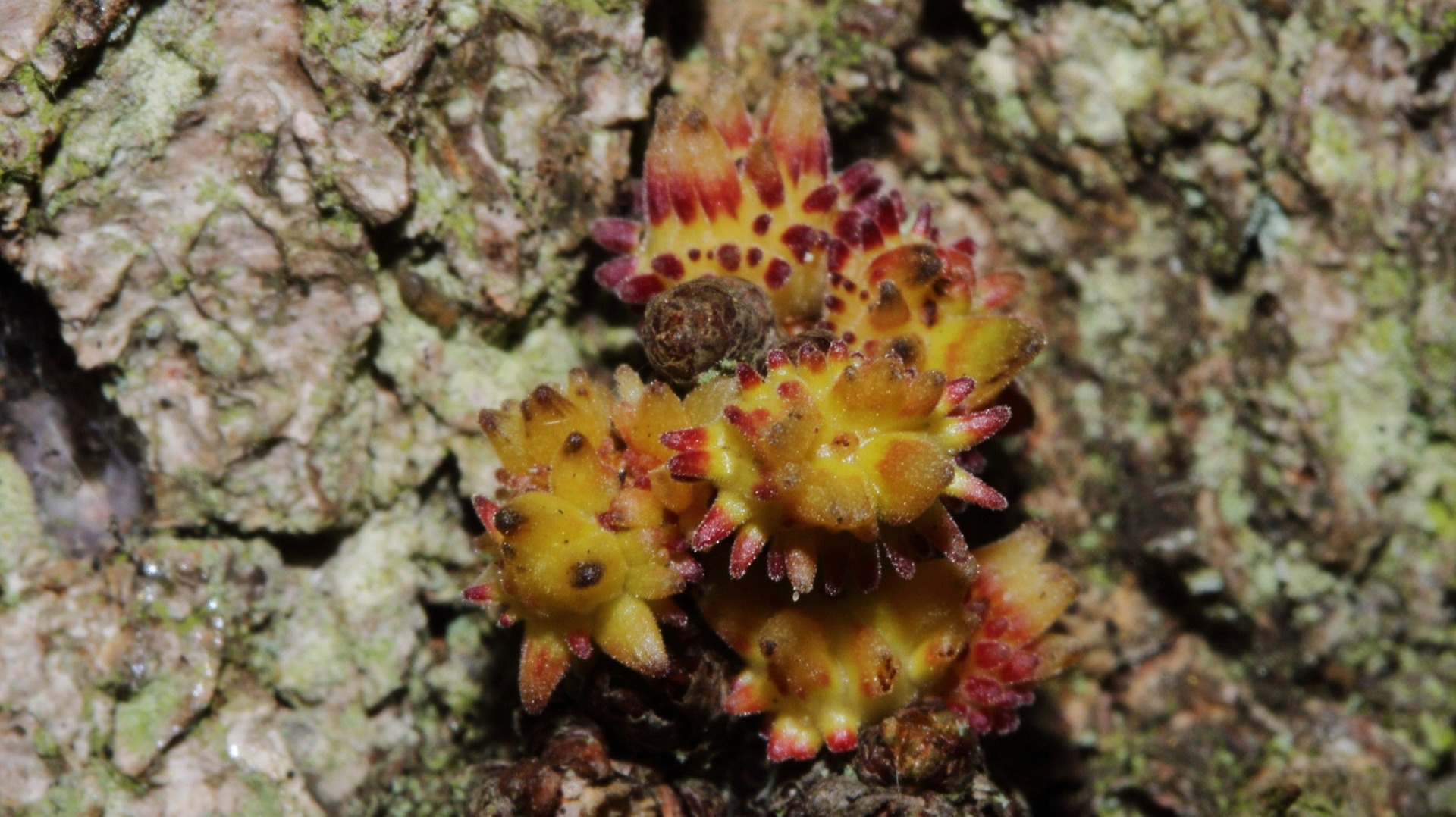
TQ4793 09/09/2023 ©Mike Rumble
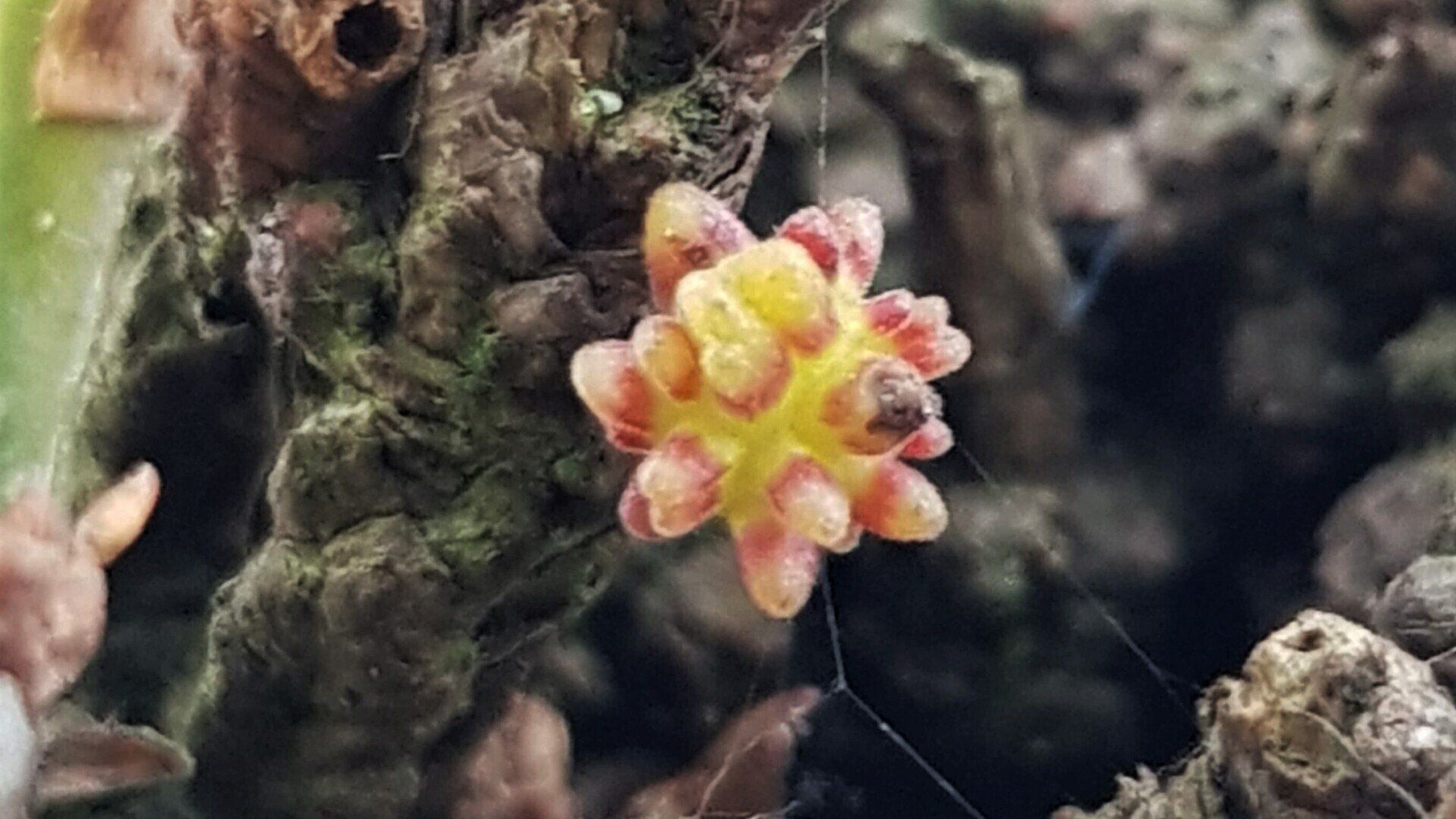
TQ4792 06/09/2022
©Raymond Brown
Oyster Gall
Neuroterus anthracinus

TQ4792 18/09/2019 ©Raymond Small
Induced by the asexual generation of gall wasp Neuroterus anthracinus. Tiny egg-shaped galls about 3mm diameter form on the midrib of oak leaves. There is a small flap of tissue sticking out each side of the base, it is important to see the flaps when identifying to avoid mixing up with similar species. The galls initially cream or green form reddish-brown spots before maturing and dropping from the leaves in autumn. Adult wasps emerge in winter and spring to lay eggs in buds which become the sexual generation.
Catkin Gall
Andricus grossulariae

TQ4792 19/05/2023 ©Raymond Small
The first record of this gall in Essex occurred during 2004, four years after being discovered in Berkshire. The galls, round with a pointed end, form in large groups on male catkins of Turkey Oak. They are induced by the sexual generation of a gall wasp. Immature galls are slightly hairy, waxy and bright green. They mature late spring becoming small, shiny and maroon coloured, before turning hard and woody. Fallen galls have been spotted at the base of a Lucombe Oak.
Knopper Gall
Andricus quercuscalicis

TQ4792 23/07/2022
©Raymond Small
Caused by the asexual generation of a gall wasp on English Oak. The galls enclose acorns and raised considerable concern when introduced to Britain during the 1960s because it was thought that as acorns were being affected could diminish future generations of oak trees. Initially knoppers are green, sticky, and develop a reddish tinge. Once mature they become brown and woody. They drop to the ground in late summer and gall wasps usually emerge the following spring.
Striped Pea Gall
Cynips longiventris
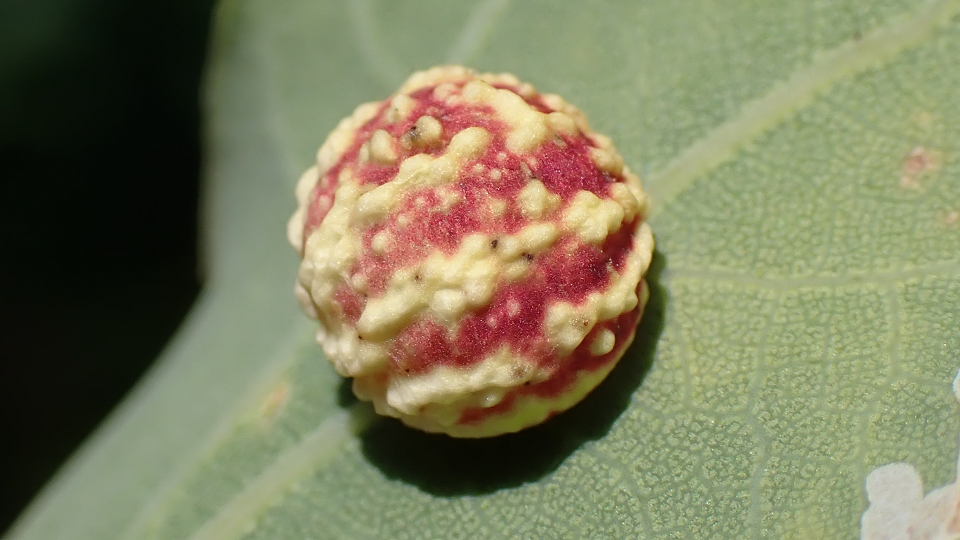
TQ4793 15/06/2025
©Raymond Small
Striped Pea Galls are caused on Oak leaves by the asexual generation of a gall wasp
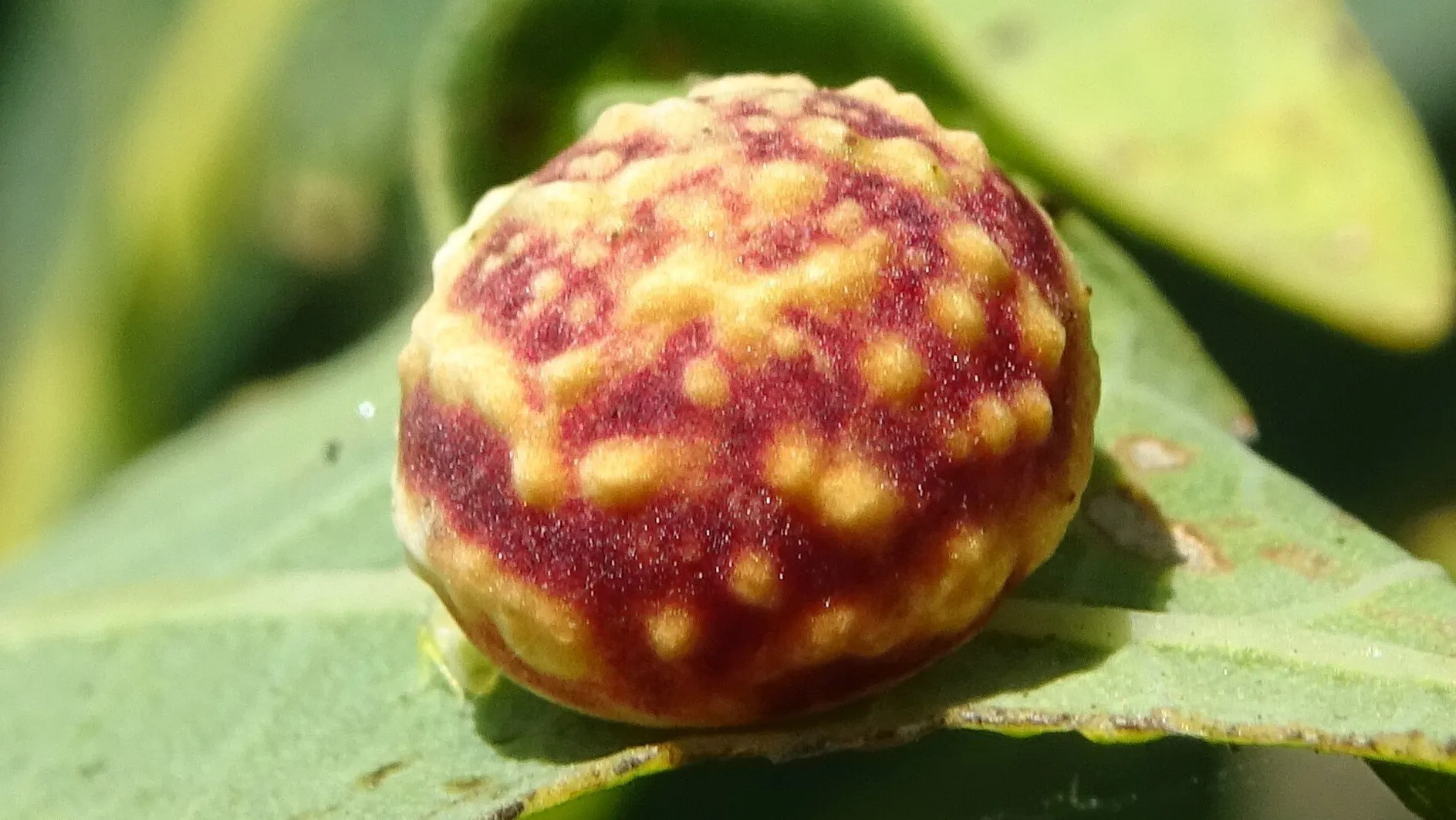
TQ4792 15/07/2022 ©Raymond Small
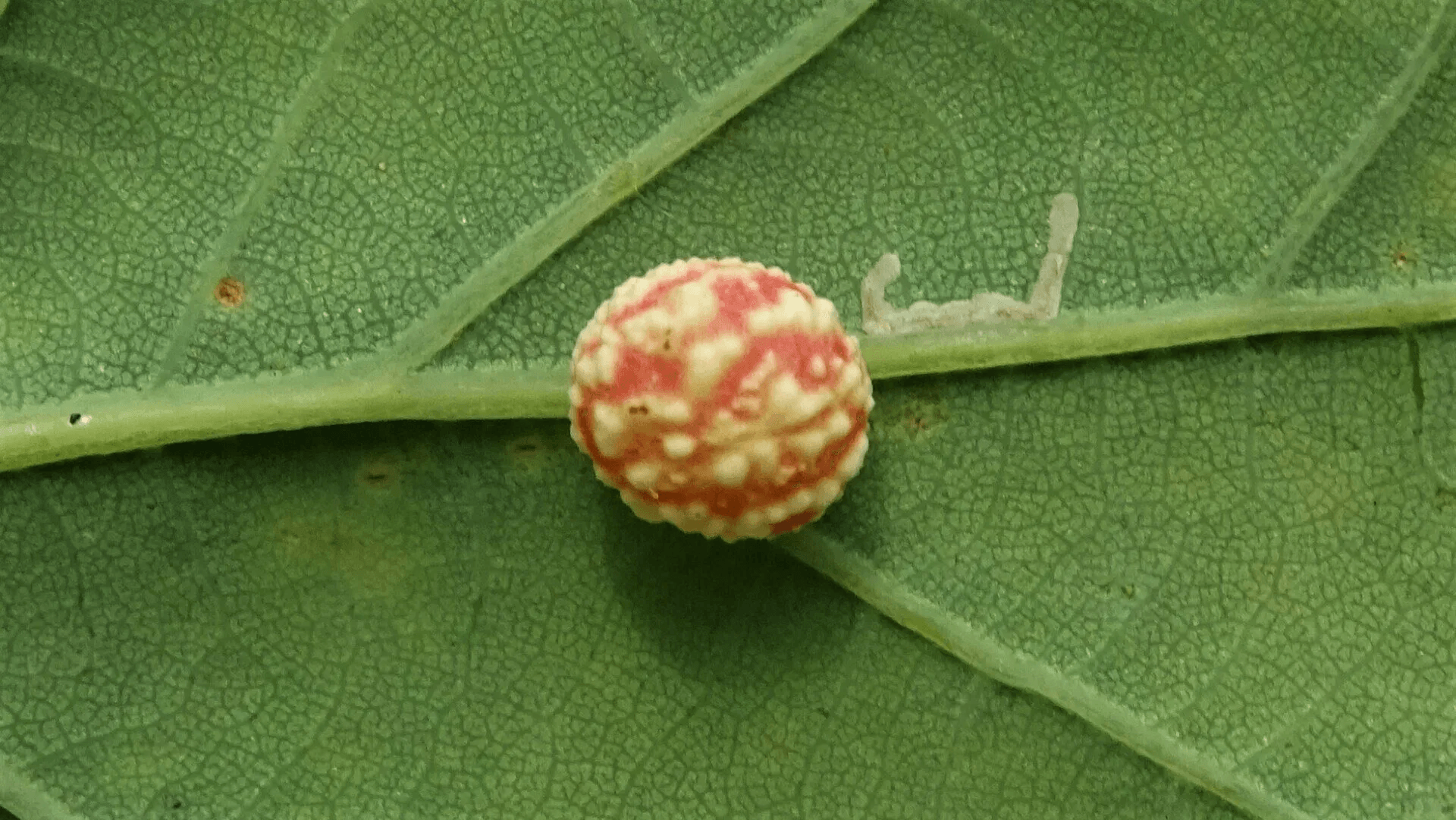
TQ4792 12/06/2022 ©Raymond Small
Cherry Gall
Cynips quercusfolii
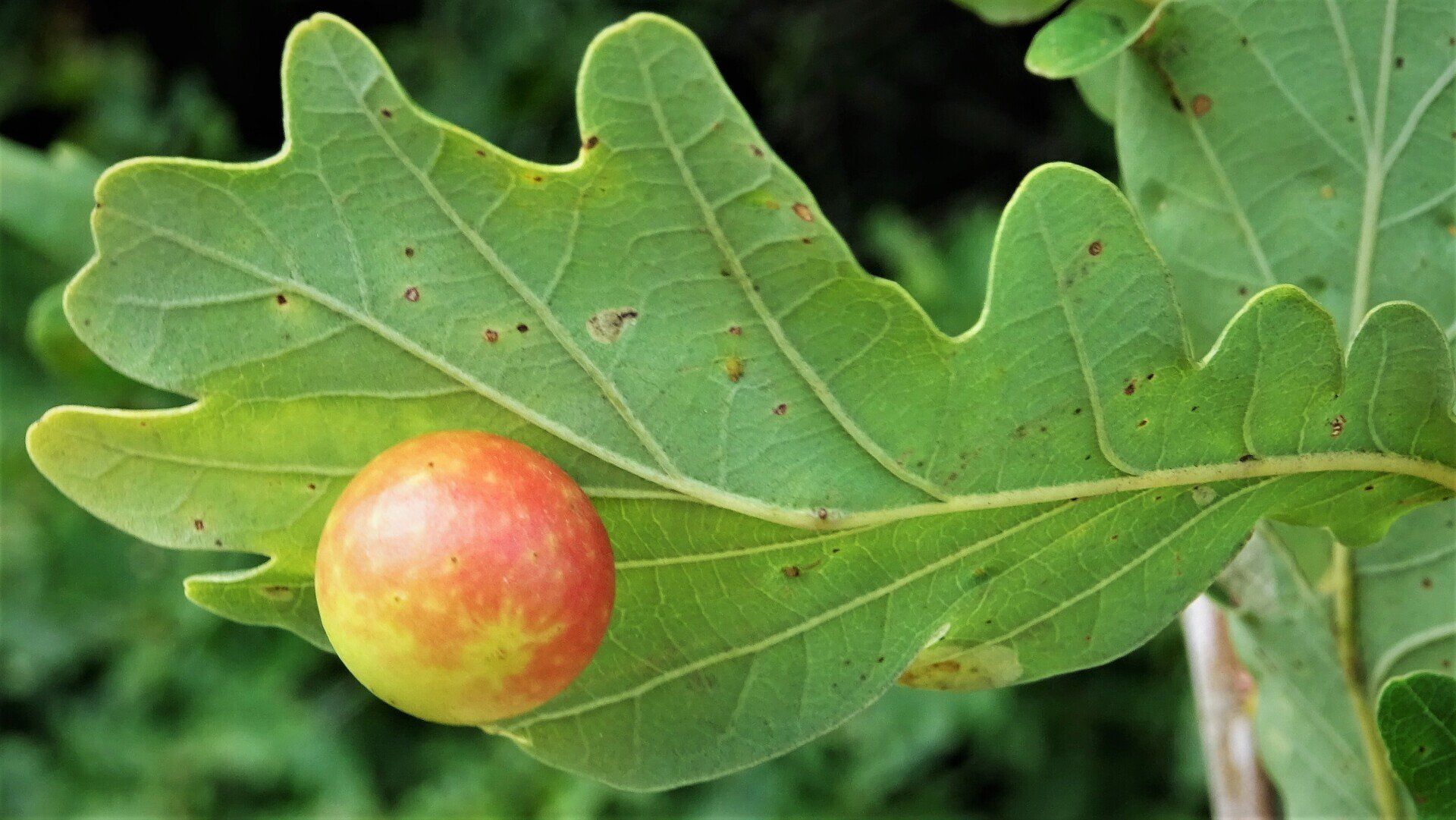
TQ4792 23/07/2022 ©Raymond Small
Abnormal growths that appear on the underside of English Oak leaves during autumn. They are caused by the asexual generation of a gall wasp. The galls are green, then red. Usually one per leaf but sometimes there may be more. Late in the year they are seen on fallen leaves on the forest floor.
Ramshorn Gall
Andricus aries
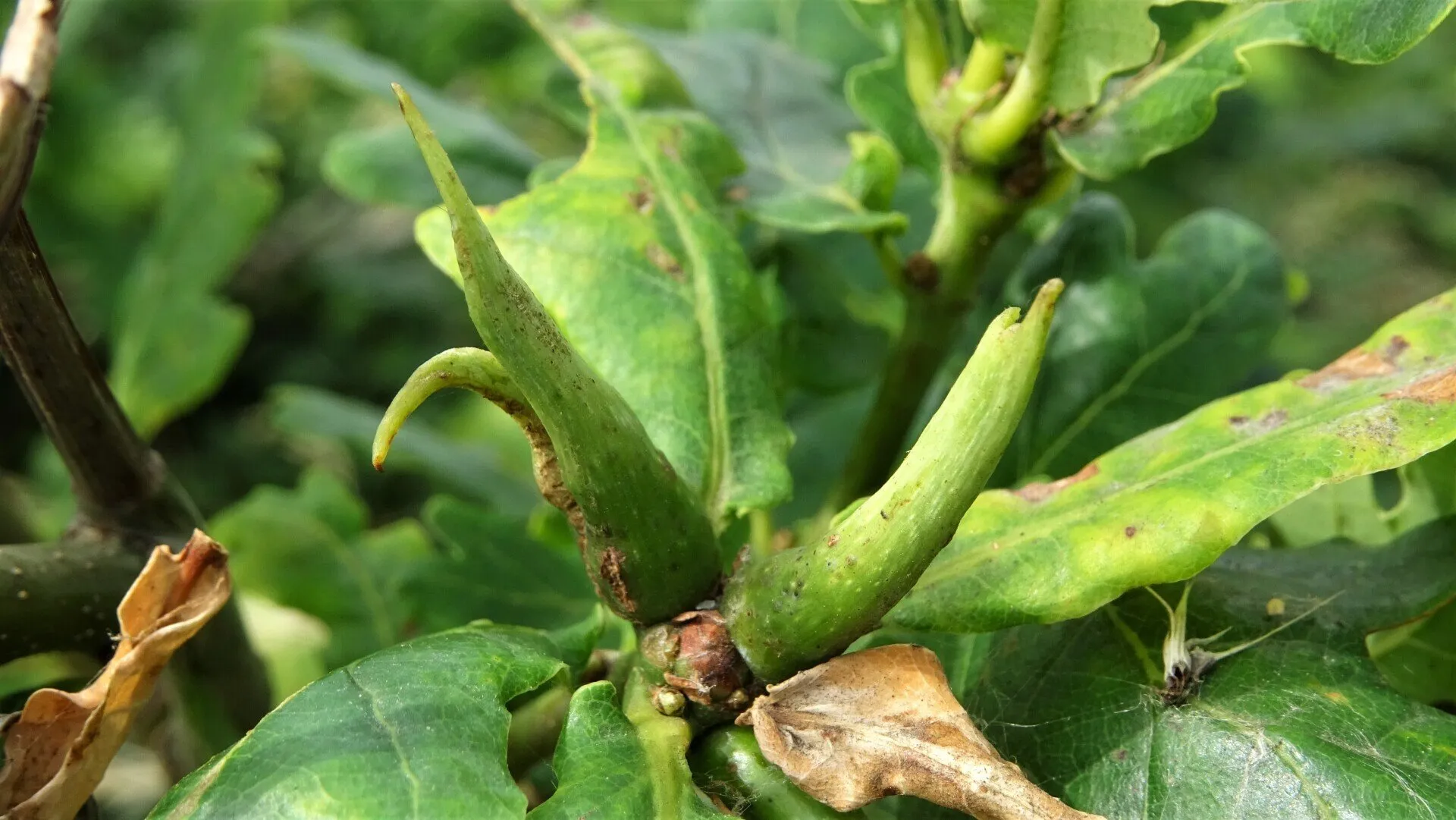
TQ4792 23/07/2022 ©Raymond Small
First recorded in Britain during 1997. This gall found on English Oak has a roundish base from which 'horns' (usually 20-30mm) protrude. During summer the green gall forms from a bud which turns woody-brown with age.
Artichoke Gall
Andricus foecundatrix
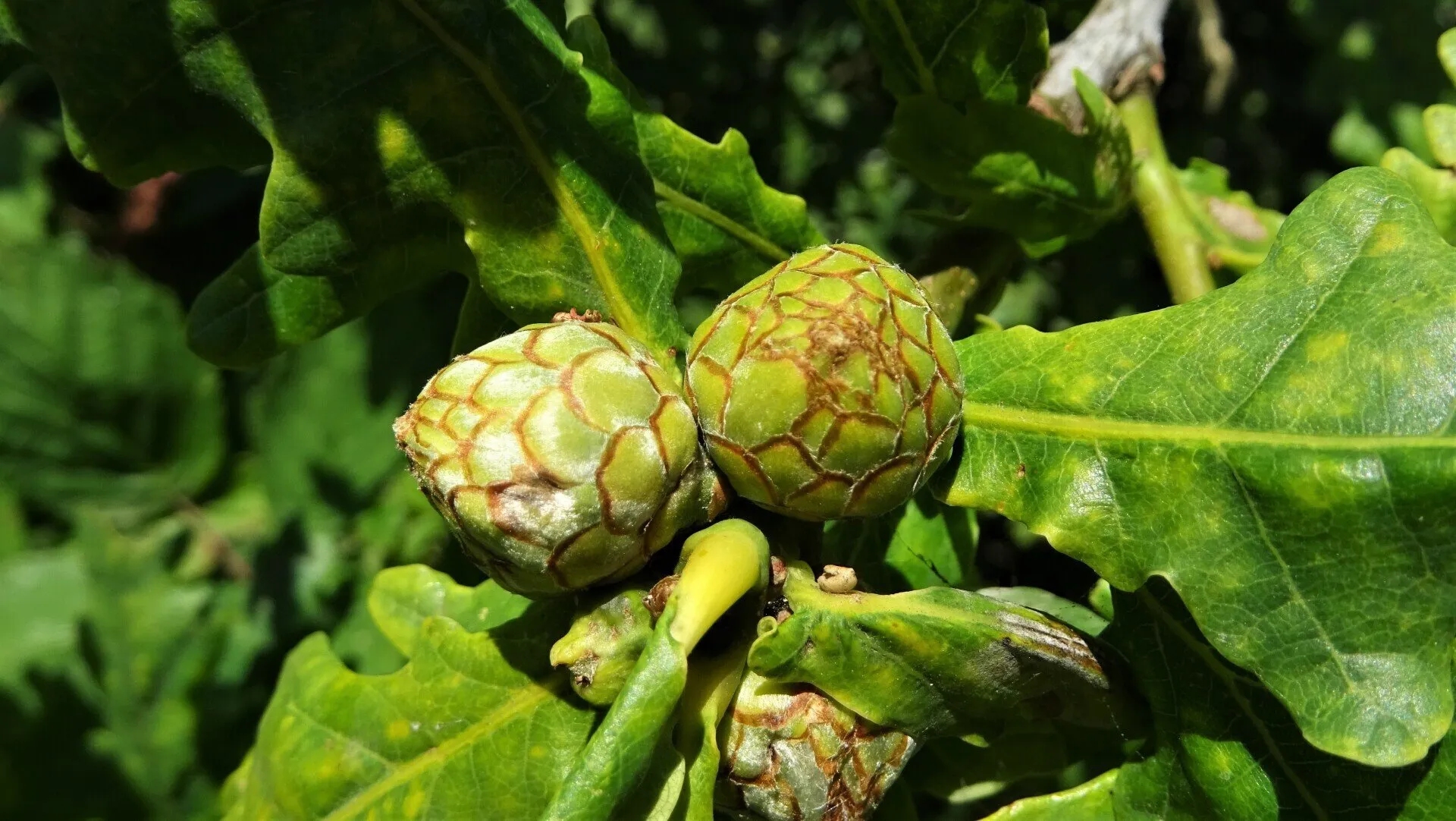
TQ4792 11/07/2022
©Raymond Small
Galls on English Oak induced by the asexual generation of a gall wasp. The galls start appearing about June. The enlarged buds grow up to 30mm in length, each contains one larva. The mature gall falls to the ground during August leaving the dried scales remaining on the twig. Also known as Hop Gall.
Felt Gall
Aceria ilicis

TQ4792 13/02/2019
©Raymond Small
Present on Holm Oak throughout the year. They are caused by mites. On the underside of the leaf an abnormal felty brown growth of hairs (erineum) forms from the leaf epidermis.
© hainaultforest.net. All rights reserved.


